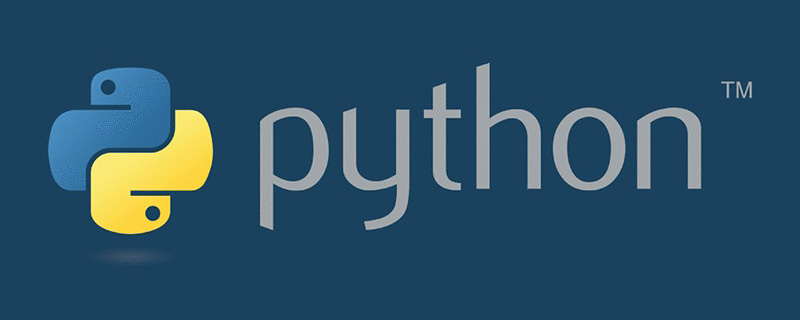
This article brings you relevant knowledge about python, which mainly introduces the relevant content about object-oriented. The four characteristics of object-oriented include abstraction, encapsulation, inheritance and polymorphism. Let’s take a look at it together, I hope it will be helpful to everyone.

Recommended learning: python video tutorial
class Test(object):
#私有方法
def __test2(self):
print("私有方法,__test2")
#普通方法
def test(self):
print("普通方法test")
#普通方法
def _test1(self):
print("普通方法_test1方法")
#在类内部调用私有方法
#t.__test2()
self.__test2()
t = Test()
t.test()
t._test1()
#t.__test2() #调用时会报错#Private method application scenario-sending text messages#私有方法应用场景--发短信 class Test: #核心私有方法,用于发送短信 def __sendMsg(self): print("---正在发送短信---") #公共方法 def sendMsg(self,newMoney): if newMoney>10000: #余额大于10000才可以调用发短信功能 self.__sendMsg() else: print("抱歉,余额不足,请先充值!") t = Test() t.sendMsg(1000000000)Copy after login#帐号不允许更改 class Person(object): def __init__(self,name,sex): self.__name = name self.__sex = sex def getSex(self): return self.__sex def getName(self): return self.__name def setName(self,newName): if len(newName)>=5: self.__name = newName else: print("名字长度必须大于等于才可修改!") xiaoming = Person("hoongfu","男") print(xiaoming.getName()) print(xiaoming.getSex()) xiaoming.setName("xiaoming") print(xiaoming.getName())Copy after login
class Test(object):
def test(self):
self.__sex = "保密"
print("普通公有方法test")
#调用私有方法
self.__test1()
def __test1(self):
print("私有方法__test1")
#调用私有属性
print("私有属性__sex:",self.__sex)
t = Test()
t.test()#Inheritance#继承 class Animal(object): def eat(self): print("----吃----") def dirk(self): print("----喝----") def run(self): print("----跑----") def sleep(self): print("----睡觉----") class Dog(Animal): ''' def eat(self): print("----吃----") def dirk(self): print("----喝----") def run(self): print("----跑----") def sleep(self): print("----睡觉----") ''' def call(self): print("旺旺叫...") class Cat(Animal): def catch(self): print("抓老鼠....") dog = Dog() dog.call() dog.eat() tom = Cat() tom.catch() tom.sleep()Copy after login
#Multiple inheritance
#多继承
class Animal(object):
def eat(self):
print("----吃----")
def dirk(self):
print("----喝----")
def run(self):
print("----跑----")
def sleep(self):
print("----睡觉----")
class Dog(Animal):
def call(self):
print("旺旺叫...")
class XiaoTq(Dog):
def fly(self):
print("----飞喽-------")
xtq = XiaoTq()
xtq.fly()
xtq.call()
xtq.eat()class Cat(object):
def __init__(self,name,color="白色"):
self.name = name
self.color = color
def run(self):
print("%s -- 在跑"%self.name)
class Bosi(Cat):
def setName(self,newName):
self.name = newName
def eat(self):
print("%s -- 在吃"%self.name)
bs = Bosi("印度猫")
print(bs.name)
print(bs.color)
bs.eat()
bs.setName("波斯猫")
bs.run()所谓重写,就是子类中,有一个和父类相同名字的方法,在子类中的方法会覆盖掉父类中同名的方法.
使用super调用父类的方法:可以直接调用父类方法,不需要通过 父类名.父类方法名 的方式
class Cat(object):
def sayHello(self,name):
print("hello---1")
class Bosi(Cat):
def sayHello(self):
print("hello---2")
#Cat.sayHello(self)
super().sayHello("Zhangsan")
bs = Bosi()
bs.sayHello()多继承举例:
class Base(object):
def test(self):
print("----Base-----")
class A(Base):
def test(self):
print("----test1-----")
class B(Base):
def test(self):
print("----test2-----")
class C(A,B):
pass
c = C()
c.test()
print(C.__mro__) #可以查看C类的搜索方法时的先后顺序所谓多态:定义时的类型和运行时的类型不一样,此时就成为多态。
多态指的是一类事物有多种形态,(一个抽象类有多个子类,因而多态的概念依赖于继承)。
当子类和父类都存在相同的print_self()方法时,我们说,子类的print_self()覆盖了父类的print_self(),在代码运行的时候,总是会调用子类的print_self()。这样,我们就获得了继承的另一个好处: 多态。
class Dog(object):
def printSelf(self):
print("大家好,我是xxx,请大家多多关照!")
class XiaoTq(Dog):
def printSelf(self):
print("Hello,ereybody,我是你们的老大,我是哮天神犬!")
#定义一个执行函数
def exec(obj):
"""
#定义时的类型并不知道要调用哪个类的方法,
当运行时才能确定调用哪个类的方法,这种情况,我们就叫做多态
"""
obj.printSelf()
dog = Dog()
exec(dog)
xtq = XiaoTq()
exec(xtq)新式类都从 object 继承,经典类不需要
Python 2.x中默认都是经典类,只有显式继承了object
Python 3.x中默认都是新式类,经典类被移除,不必显式的继承object
#新式类和经典类的区别
class A:
def __init__(self):
print('a')
class B(A):
def __init__(self):
A().__init__()
print('b')
b = B()
print(type(b))class A():
def __init__(self):
pass
def save(self):
print("This is from A")
class B(A):
def __init__(self):
pass
class C(A):
def __init__(self):
pass
def save(self):
print("This is from C")
class D(B,C):
def __init__(self):
pass
fun = D()
fun.save()推荐学习:python视频教程
The above is the detailed content of Detailed examples of Python's four object-oriented features. For more information, please follow other related articles on the PHP Chinese website!